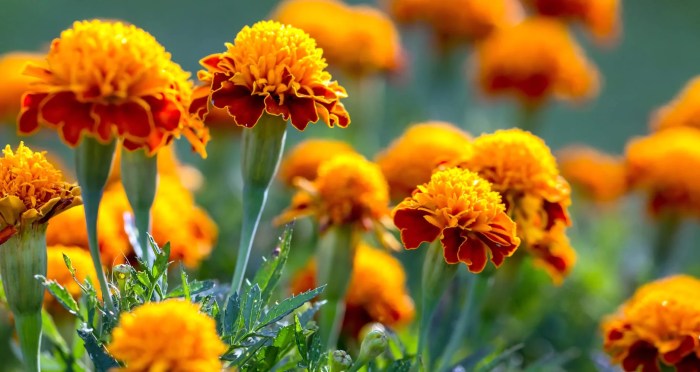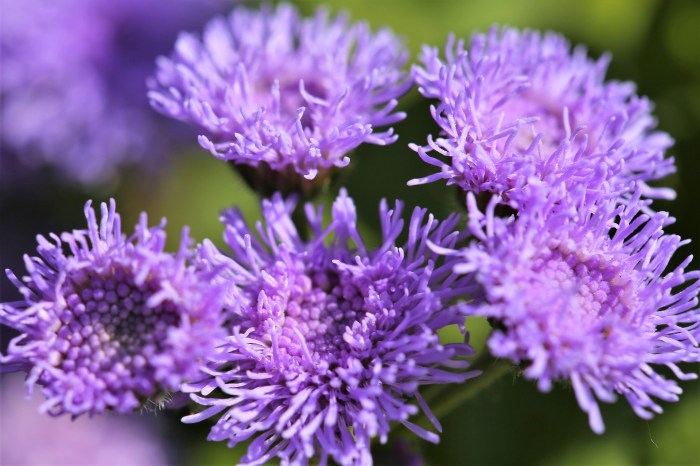Hanging plants to keep bugs away is an effective and eco-friendly way to deter pests from your home. Certain plant species release natural chemicals or compounds that repel insects, creating a natural barrier around your living space.
By strategically placing these plants near windows, doors, and other entry points, you can maximize their bug-repelling effects. Companion planting, combining different bug-repelling plant species, can further enhance pest control.
Plant Species and Bug Repellent Properties
Various plant species possess natural bug-repellent properties, effectively deterring insects from infesting indoor and outdoor spaces. These plants produce specific chemicals or compounds that emit scents or act as natural insecticides, creating an inhospitable environment for bugs.
Table of Effective Bug-Repellent Plants
The following table lists common plant species, the types of bugs they repel, and scientific references supporting their repellent properties:
| Plant Species | Bug Types Repelled | Scientific Reference |
|---|---|---|
| Basil | Flies, mosquitoes, aphids | National Library of Medicine |
| Citronella | Mosquitoes, gnats | ScienceDirect |
| Lavender | Moths, fleas, mosquitoes | National Library of Medicine |
| Marigolds | Aphids, thrips, nematodes | University of Minnesota Extension |
| Mint | Ants, roaches, flies | National Library of Medicine |
| Pennyroyal | Fleas, ticks, mosquitoes | ScienceDirect |
| Rosemary | Mosquitoes, flies, moths | National Library of Medicine |
| Sage | Mosquitoes, moths, beetles | ScienceDirect |
| Thyme | Mosquitoes, flies, aphids | National Library of Medicine |
Placement and Positioning for Maximum Bug Repellency
Hanging plants strategically around your home can enhance their bug-repelling effects. To maximize deterrence, position plants near potential bug entry points like windows, doors, and vents. Aim for a distance of 1-2 feet from these openings, allowing the plant’s aroma to effectively disperse and create a protective barrier.
Effective Plant Placement
* Hang plants near windows, ensuring they receive ample sunlight while deterring bugs from entering through open panes.
- Position plants close to doors, creating a natural bug-repelling curtain that discourages insects from entering when doors are opened.
- Place hanging plants near vents and air conditioning units, where their scent can effectively circulate throughout the room and deter bugs from entering via these channels.
Companion Planting for Enhanced Bug Control

Companion planting is a gardening technique that involves planting different species of plants together to create a mutually beneficial environment. In the context of hanging plants for bug control, companion planting can be a powerful strategy for enhancing the repellent effects of these plants.By
Hanging plants are a great way to add greenery to your home while also keeping bugs away. However, if you’re noticing that your hanging plants are starting to die, there could be a few reasons why. For more information on why your hanging plants may be dying, visit why are my hanging plants dying . Once you’ve determined the cause of the problem, you can take steps to fix it and get your hanging plants back to health.
combining different plant species with complementary bug-repelling properties, gardeners can create a synergistic effect that increases the overall effectiveness of their bug control efforts. This is because different plants produce different compounds that repel specific types of insects, and when planted together, these compounds can work together to create a more comprehensive repellent barrier.
Suggested Companion Plant Combinations
Here are some suggested companion plant combinations that can be used to enhance bug control in hanging plants:
- Basil and Marigolds:Basil is a natural insect repellent that can help keep away mosquitoes, flies, and aphids. Marigolds are also known for their insect-repelling properties, and they can help deter nematodes and other soil-borne pests.
- Lavender and Rosemary:Lavender is a calming herb that can help repel mosquitoes, fleas, and moths. Rosemary is another fragrant herb that can help keep away flies, aphids, and cabbage moths.
- Mint and Catnip:Mint is a strong-smelling herb that can help repel ants, flies, and mosquitoes. Catnip is another insect-repelling herb that can help keep away aphids, squash bugs, and flea beetles.
- Thyme and Oregano:Thyme is a versatile herb that can help repel mosquitoes, aphids, and spider mites. Oregano is another strong-smelling herb that can help keep away flies, ants, and cockroaches.
By planting these companion plants together, gardeners can create a hanging garden that is not only beautiful but also effective at repelling bugs.
Maintenance and Care for Healthy Bug-Repelling Plants

Maintaining the health and longevity of hanging plants used for bug repellency is crucial to ensure their effectiveness. By providing proper care, these plants can continue to deter pests and enhance the overall well-being of the indoor environment.
Hanging plants are a great way to keep bugs away from your home. By following the steps on how to hanging plants outdoor , you can create a natural barrier against pests. Hanging plants release natural oils that repel bugs, and their foliage can also create a physical barrier that prevents bugs from entering your home.
In addition, hanging plants can help to improve air quality, which can also help to deter bugs.
The specific care requirements for bug-repelling hanging plants vary depending on the species. However, general guidelines can be followed to ensure optimal plant health and bug-repelling efficacy.
Watering
Watering needs depend on the type of plant and the environmental conditions. Allow the soil to dry out slightly between waterings to prevent overwatering. Use room-temperature water and avoid getting water on the leaves, as this can promote disease.
Sunlight
Most bug-repelling plants prefer bright, indirect sunlight. However, some species may tolerate low-light conditions. Determine the light requirements for each plant and provide an appropriate location.
Hanging plants can be a great way to keep bugs away from your home. Some of the best plants for this purpose include spider plants, ferns, and lavender. If you’re looking for hanging plant pots, Bunnings has a wide selection to choose from.
You can find hanging plant pots in a variety of styles and materials, so you’re sure to find the perfect ones for your home. And once you have your plants hung up, you can enjoy the benefits of bug-free living.
Fertilizer
Fertilize bug-repelling plants regularly during the growing season. Use a balanced liquid fertilizer diluted to half strength. Avoid over-fertilizing, as this can damage the plants.
Other Care Tips, Hanging plants to keep bugs away
Regularly inspect plants for pests or diseases. Remove any affected leaves or stems immediately to prevent the spread of problems. Prune plants as needed to maintain their shape and encourage new growth. Repot plants every few years to provide fresh soil and nutrients.
DIY Projects and Creative Ideas for Bug-Repelling Plant Displays

Creating aesthetically pleasing bug-repelling plant displays is possible with a touch of creativity and DIY spirit. These projects not only enhance the visual appeal of your space but also provide natural protection against pesky insects.
Repurposing everyday household items can transform into unique plant hangers. An old colander, for instance, can be suspended from the ceiling, creating a quirky and functional hanging planter. Alternatively, macrame techniques can be employed to craft intricate plant hangers that add a touch of bohemian flair.
Upcycled Planters
- Tin Can Planters:Transform empty tin cans into charming planters by painting them in vibrant colors or wrapping them in decorative fabric. Punch holes for drainage and suspend them using twine or wire.
- Plastic Bottle Planters:Cut the bottom off plastic bottles and create colorful hanging planters. Decorate them with paint, markers, or decoupage to match your décor.
- Egg Carton Planters:Repurpose empty egg cartons into unique hanging planters. Fill each compartment with soil and seeds, and suspend the carton using string or wire.
Creative Plant Hangers
- Macrame Hangers:Learn the art of macrame to create intricate and stylish plant hangers. Experiment with different knots and patterns to add a touch of bohemian charm to your space.
- Driftwood Hangers:Collect driftwood from the beach or local parks and use it to create rustic and natural plant hangers. Attach the driftwood to the ceiling using twine or wire, and suspend the plants from the branches.
- Leather Hangers:Cut leather strips into various lengths and braid them together to create sturdy and elegant plant hangers. Attach metal rings to the ends for easy suspension.
Conclusive Thoughts: Hanging Plants To Keep Bugs Away

Incorporating hanging plants into your home decor not only adds a touch of greenery but also provides a natural solution to keep bugs at bay. With proper care and maintenance, these plants will continue to thrive and protect your home from unwanted pests.
User Queries
What are the most effective hanging plants for repelling bugs?
Some of the most effective hanging plants for repelling bugs include lavender, mint, basil, rosemary, and marigolds.
Where should I hang plants to maximize bug repellency?
Hang plants near windows, doors, and other entry points to create a natural barrier against bugs.
Can I use hanging plants to repel specific types of bugs?
Yes, certain plant species are effective at repelling specific types of bugs. For example, lavender is known to repel mosquitoes, while mint repels ants.